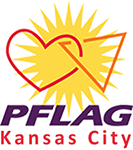I didn’t learn about the safety pins until after the election when the school district my children attended, Shawnee Mission, publicly announced a policy requesting staff members to not wear the pins. After SMSD decided wearing safety pins was a political statement and that they could not be worn at school, the safety pins received local publicity. So let’s consider a school, where a safety pin could make a difference. A child who feels bullied or threatened can feel safe in a class room where a teacher is wearing a safety pin, where a teacher is willing to stand up against intolerance in that class room. And maybe that could make a difference.
I felt it was an easy way to say, “I am an ally!” But then I talked to a friend of mine, who happens to be transgender, and she is not a fan of the safety pins because her friends are bullied and have been physically harmed. She doesn’t think safety pins will make a difference. She is right; the mere presence of safety pins will not stop violence, but wearing a safety pin can communicate that you are willing to be part of the solution.
PFLAG has materials available to help you in your journey if you are a member of the LGBTQ community or an ally, parent or family member. Educating people as to the appropriate language is a great starting point.
Lisa W., President
PFLAG KC Chapter
Here is a bit of history on the safety pin campaign: The founder of the campaign, who tweets as @Cheeah, told the BBC ‘This is meant to be more than just a symbolic gesture or a way for like-minded people to pat each other on the back.If people wear the pin and support the campaign they are saying they are prepared to be part of the solution. It could be by confronting racist behaviour, or if that is not possible at least documenting it. More generally it is about reaching out to people and letting them know they are safe and welcome.’ she says.
Read more at http://www.marieclaire.co.uk/
